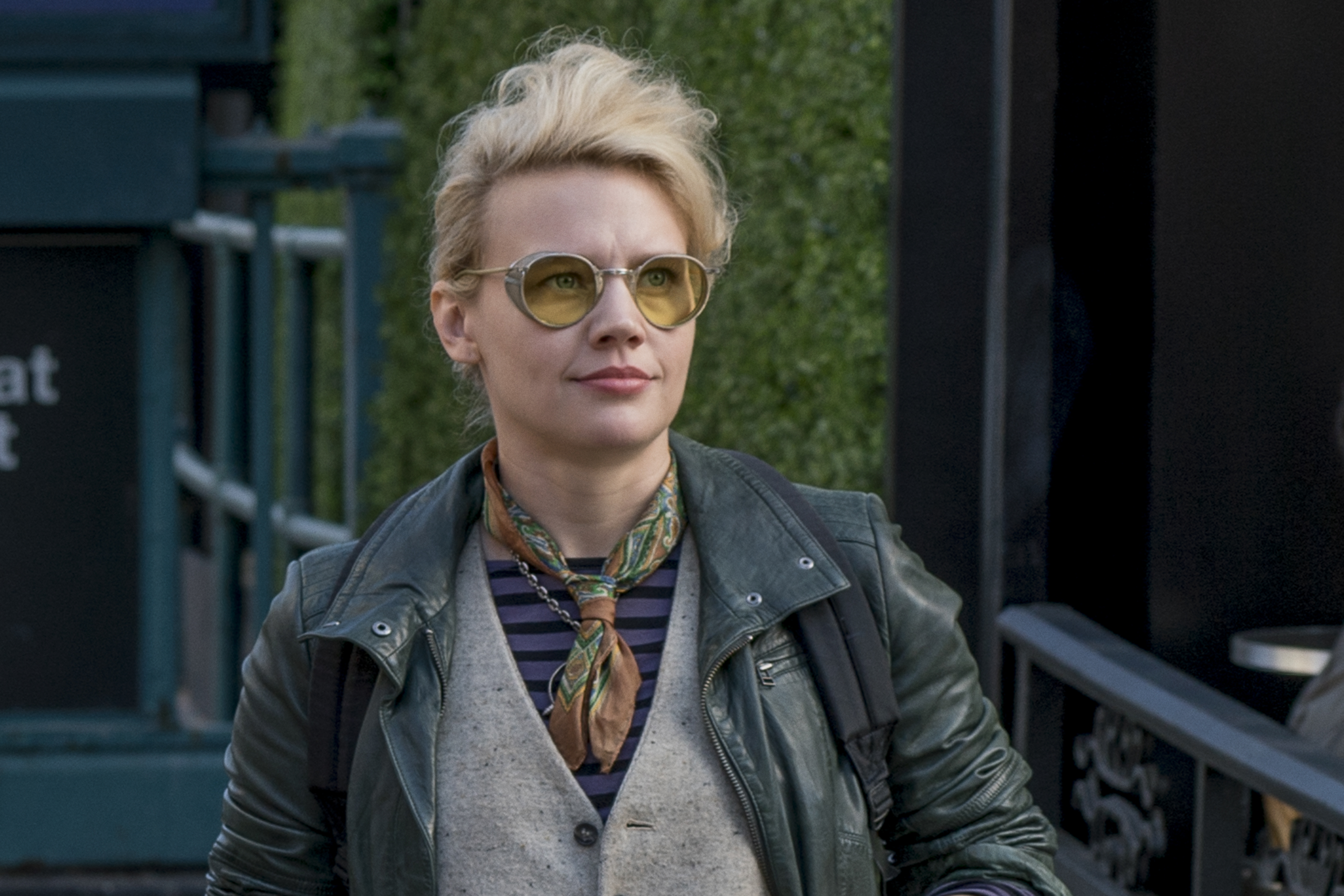
Gay characters, gay women characters in particular, have had a tough time on television in recent months. From The 100 to The Walking Dead enacting the “Bury Your Gays” trope, the narrative that gay characters are only good and worthy if they are dead (for “dramatic effect”) has been run into the ground. But there are three examples of a possible shift in narratives about gay characters.
Vanity Fair recently interviewed real life couple Cameron Esposito and Rhea Butcher, the creators behind the comedy series Take My Wife. The show, which is about a couple who run a small business, shows Esposito and Butcher’s characters existing outside the media’s obsession with dead gay characters. Even Butcher herself lamented about the state of television when it comes to showcasing gay characters only as being useful for drama. “Lesbians don’t really get to be on TV and not die,” she said. She also told Vanity Fair that she and Esposito wanted the show to represent something real and tangible. “I wanted to represent something that actually looked real to peole and feels like a real household, career, experience, show, audience. I just wanted everything to feel real, and I enjoy that challenge.”
A particularly quiet watershed moment for gay characters happened in the realm of animation, and I’m actually not talking about Steven Universe, which frequently details the lives of gay characters. This moment came from Nickelodeon’s newest cartoon, The Loud House, in which main character Lincoln Loud’s best friend Clyde McBride comes from an interracial same-sex household. Wayne Brady and Michael McDonald (not the singer) provide the voices for Clyde’s parents, Harold and Howard McBride.
Also, in superhero news, CW Seed is bringing the first out gay superhero to the screen. According to Deadline, The Ray (aka reporter Raymond “Ray” Terrill) will star in an upcoming animated series called Freedom Fighters: The Ray, much like how Vixen debuted. Also like Vixen, The Ray is expected to transition into live-action, making him the second gay superhero portrayed on screen (the first being Deadpool, as evidenced by Ryan Reynolds’ insistence that everything about Deadpool would stay true to the character, including his bisexuality). The voice actor who will portray The Ray (an actor who has yet to be cast) is also expected to portray him in live-action form.
While all of this is good news, there is unfortunately still the lingering doubt that audiences and/or studios won’t accept gay leads in their stories. Such is the case with Ghostbusters director Paul Feig oddly deflecting the question of if Kate McKinnon’s character Holtzmann is a lesbian. When asked by The Daily Beast about if Holtzman was a lesbian, Feig coyly said, “What do you think?” He then added, “I’d like to think yes, I say. …I hate to be coy about it. But when you’re dealing with the studios and that kind of thing…” He punctuated his statement with, as The Daily Beast describes it, an apologetic shrug.
What’s even stranger is that even though he didn’t answer the question about Holtzmann, McKinnon herself is gay; while that doesn’t mean Holtzmann is gay necessarily, McKinnon’s participation in the film and how she played her role (which, from where I’m sitting, was quite overtly flirty with Kristen Wiig’s Erin Gilbert) would certainly seem to play against the idea that the studio or audience can’t handle a gay lead, whether it’s the actress or the character. In short, it shouldn’t matter in any scenario that Holtzmann is gay. Judging from a quick search of Ghostbusters fanfiction, much of which is about Erin and Hotlzmann, a large contingent of the audience is perfectly fine with a gay leading character.
Feig’s hesitance to confirm Holtzmann’s sexuality for fear of studio backlash (national, international, or otherwise) falls in line with the general studio practice of casually baiting audiences, either intentionally or unintentionally, with inclusion, only to later reverse or slyly not deny-not confirm key facts. This kind of baiting is annoying to say the least, particularly since LGBT characters are few and far between to begin with. The lack of representation forces fans to create their own narratives and theories, but lately, fans have been demanding that studios become more insistent on creating LGBT characters within their mainstream, blockbuster franchises such as Star Wars and the Marvel franchise.
However, things are progressing in Hollywood, if at a snail’s pace. One way to increase the pace, though, is for Hollywood to become more inclusive of others both in the realm of talent and behind the scenes. Currently, disruptive television like online viewing (such as the case with Take My Wife, which is a streaming show on Seeso) allows audience members who aren’t usually represented in the mainstream to find characters that reflect them and their experiences. Also, it allows for creators who might not have a seat at the proverbial table to be in charge of the content they create and how it speaks to their audience. The old way of doing things in Hollywood is quickly becoming obsolete as more and more people become makers of their own destiny with other outlets. Eventually, the old guard will have to catch up and start employing the creators and talent that have captured large chunks of their market. For instance, Laverne Cox got her start in disruptive TV with Netflix’s Orange is the New Black. Now, this fall you can see her on CBS’ Doubt starring opposite Dulé Hill. The disruptor becomes part of the new Hollywood order.
What do you think about the state of LGBT characters on television? What solutions would you give to Hollywood? Give your opinions in the comments section below!